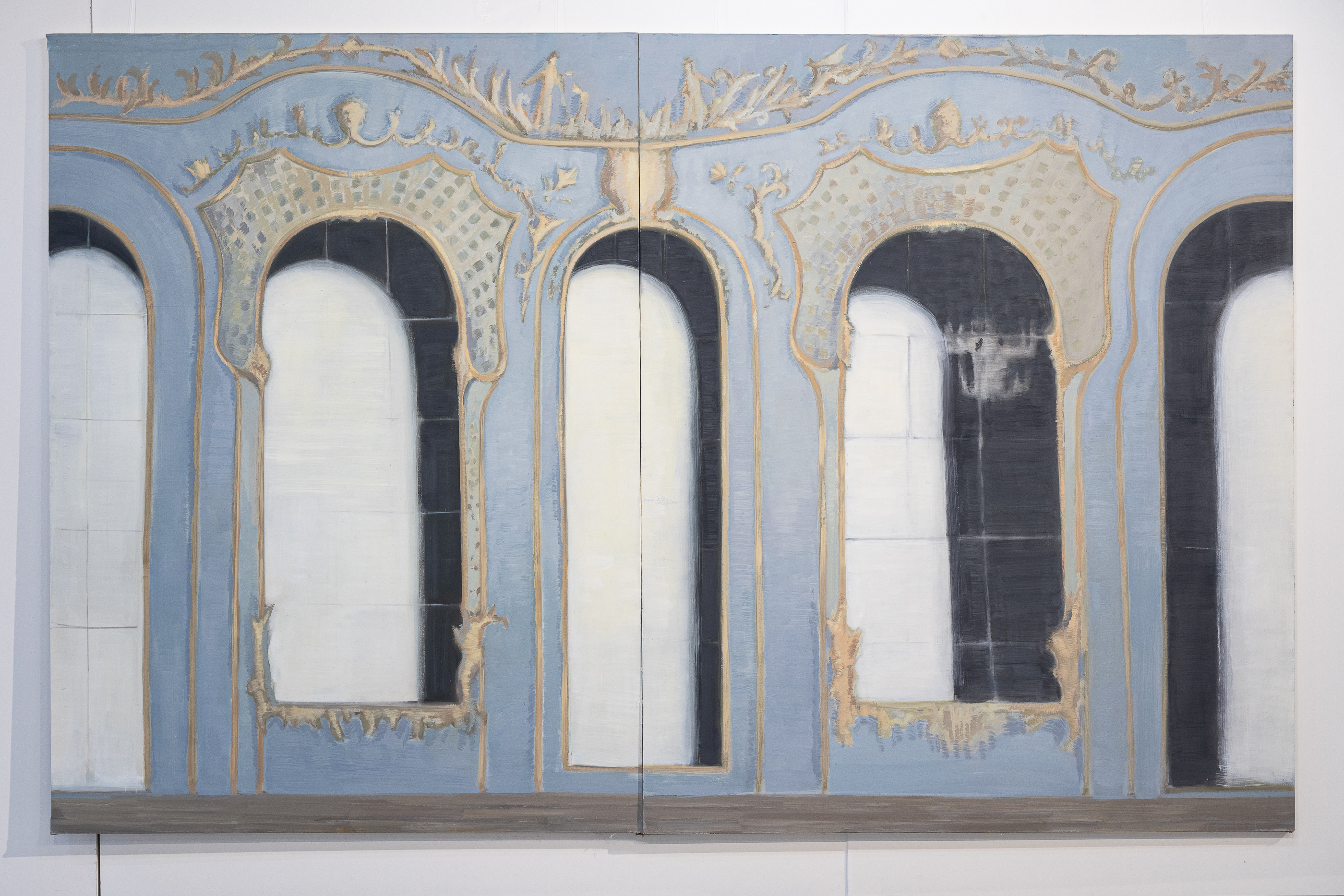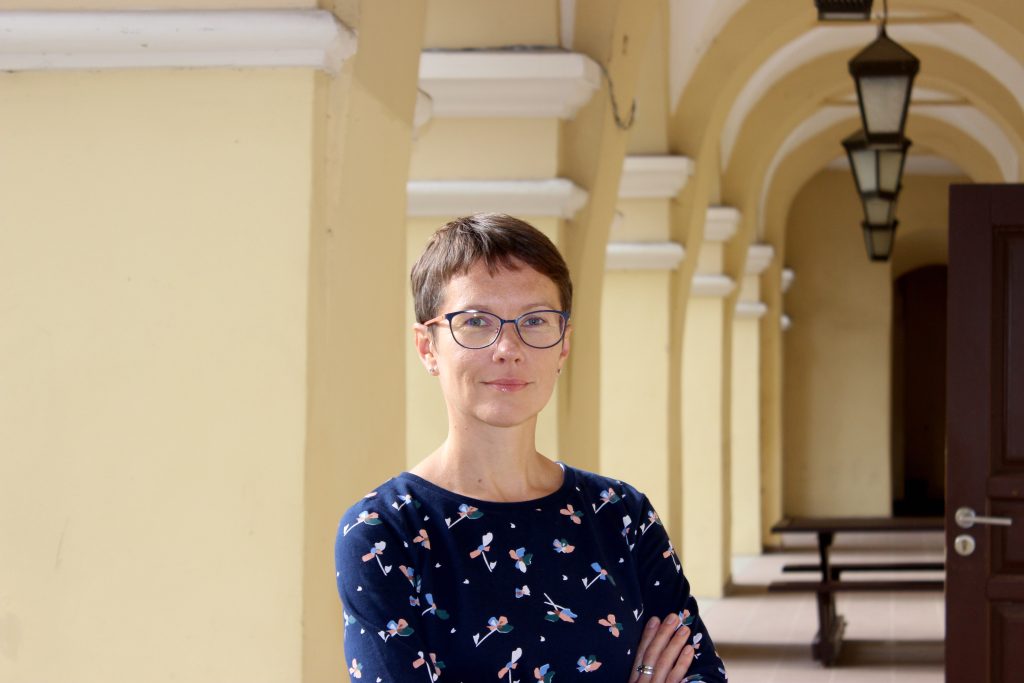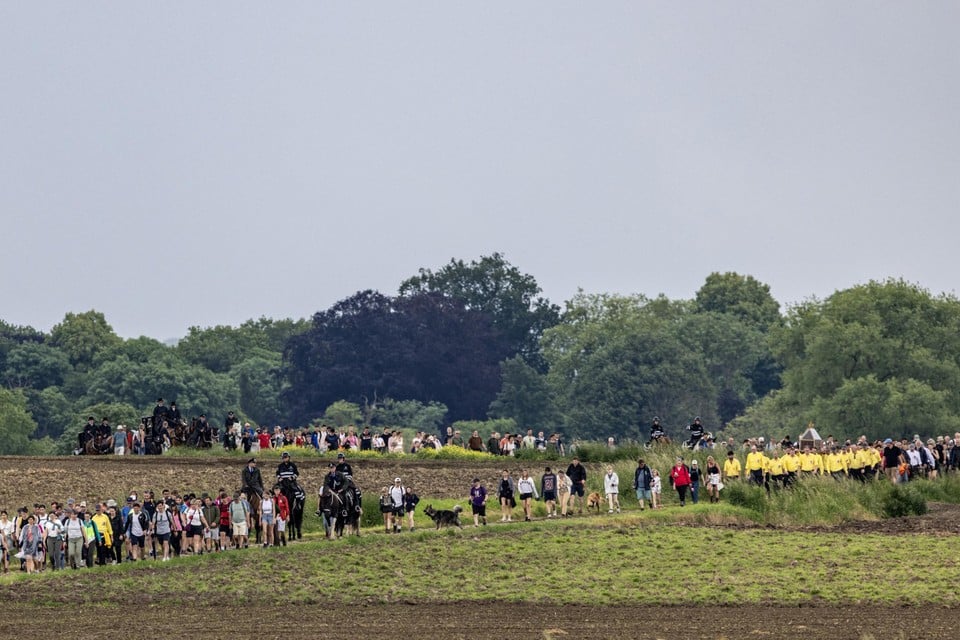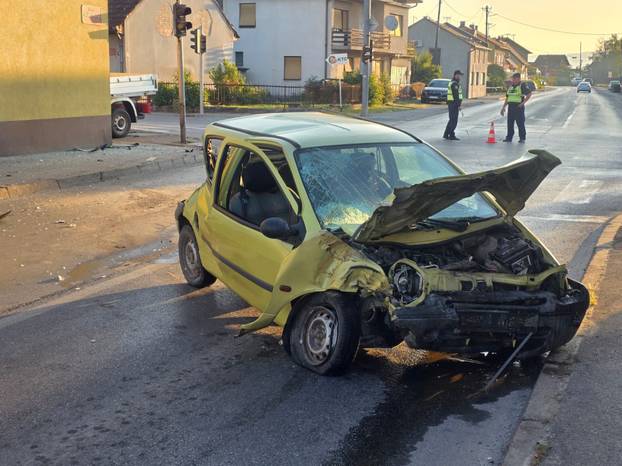Echoes of the images you see

The classic story of Narcissus and Echone, which was discussed at the Gabija Gallery of the Lithuanian Artists’ Union, which was dedicated to the 90th anniversary of Gabija Ta Melê II (« Her still sounds ») at the Gabija Gallery. This Aido Nymph fell in love with a daffodil, a guy who was only admired by himself. Echone goddess Hera punished for helping Zeus to hide infidelity, and has since repeated only the last words of other people.
A sense of coziness and warmth in the spring sun was surrounded by the gallery. The large -format work was also contributed to this. Although only eleven works were exhibited at the exhibition, the big hall really did not feel emptiness – on the contrary, each work had enough space to breathe and be noticed.
The scenography of the exhibition is traditional – the works hanging on the walls, but the falling sunlight gave everything extra charm, as if it strengthened the mood of each work. When they came to the work « Indians » (2025), older Kaunas residents were able to recognize the motive – a group of Indian musicians often appeared in Laisvės Alley. This image aroused collective memories that were perfectly matched with the main idea of the exhibition – memories are like an echo: sometimes clear and sometimes out and not fully real. They play in our memory, although their outline is often blurred.
As I move toward other works in small steps, I stopped at the Caspian Tiger (2024). Not only the impressive, quite large figure of the tiger, but also the color gamut – gentle, muted gray, intertwined with blue and green shades attracted attention. Looking at the painting for a longer time, these colors were like a reflection of nature, natural and familiar. At the same time, however, they looked stuck in collective memory – as if we had seen them many times, but never fully understood – where. After a while, even the tiger began to look close – as if there was a quiet, invisible connection between the viewer and his knit. A connection that may have never existed, but hiding in memory, always quietly lied quietly somewhere.
Indians / Photo by Regimantas Zakšensk
It seemed that the mirrors that G. Tirkovaitė talks about was inviting her to experience the present and completely relax and drown in the paintings. « Naichi Kalos, Kalos (beautiful, beautiful) one side, the other side of Ala (someone else) » (2024), the mirrors did not act as things, but as a silent time capsules – not by reflecting, but absorbing. There is a movement, the beginning and the end of the movement, and all remain in the present, which neither moves or looks back. Such a present is like a mirage of light, where there is no weight of experience or echoes of history. The reflection in the mirror is no longer a witness, but a wandering shadow that no longer needs a gaze or identity. It becomes a video echo, a visual silence that speaks not what it shows, but also what is no longer able to recreate. At the same time, this work and its title are associated with the myth of the main exhibition – echone.
As the exhibition stayed longer, their motives began to pass each other, creating new compounds in memory – such acquaintances but strangely changed.
In order to get lost – not only in painting, but also in nature -covered, deserted conservatory – the viewer could stop at work « 55 » (2024) and « Light air » (2024). These paintings, drowned in greenish -blue toning, slowly began to knit silent dialogue. As the exhibition stayed longer, their motives began to touch each other, creating new compounds in memory – such acquaintances but strangely changed. After a few visits, I started thinking that the paintings look completely different than for the first time. Could the views of the images be seen independently? At the same time, a strange feeling appeared – as if you could no longer trust your vision or memory completely. Memory became the power of creation, not a document here – it mixed fragments, changed outlines, created new images or even sensations. This change was not a disturbance – the invitation to see more quickly when the reality is not stable and the painting itself becomes a constantly changing, living organism. Not only did the viewer wandered in these spaces, but he constantly rebuilt what he saw – as if he were looking and drawing his own image.
Naichi Kalos, Kalos (beautiful, beautiful) one side, bela (something else) on the other side. / Photo by Regimantas Zakšensk
She speaks echoes, which does not always return on the same path. She repeats, but never identifies, creates silence that sounds long for you when you leave the hall. Adonta Ta Melê II did not offer one answer or clear interpretation – rather, he called for a presence where every step, each gaze becomes a new fragment of the sentence. As an Echone, he is forced to repeat foreign words, but still expressing himself with a fragile echo, so the viewer in this world of exhibition became the one who created a new voice out of silence. Perhaps the most important thing here is not what you saw, but what is left when you don’t see it.









